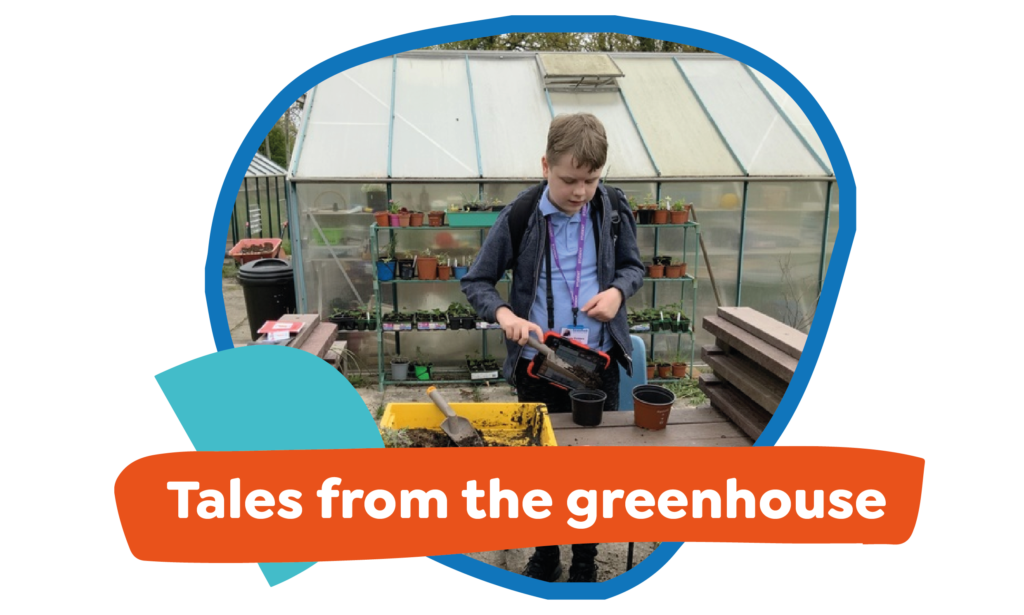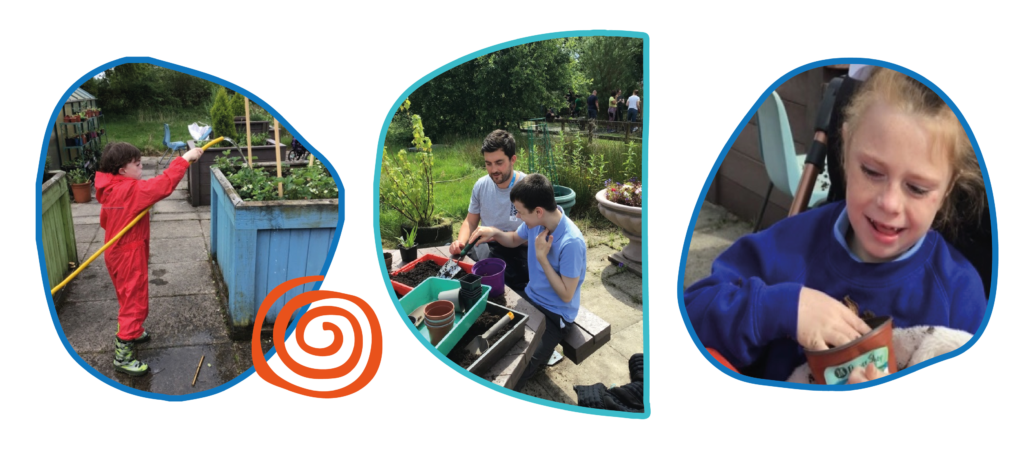
We are delighted to share with you the latest addition of Jean Barratt’s blog, Tales from the Greenhouse. Jean, a teacher at Seashell Royal School Manchester, runs a programme which looks to develop our students’ skills through horticulture. The programme evolves with the seasons, and provides an opportunity for students to experience change and regular routine: from sowing seeds in May to harvesting in June and planting in autumn.
In this blog, Jean provides an insight into the activities of the horticulture programme and the positive impact sessions have on individuals at Seashell, as well as some top tips for getting your own young ones interested in the garden.
This is first summer in the two years since Covid struck that I have been able to work with all the students in mixed groups, and this small return to normality has been wonderful. I finally have my teams of aspiring gardeners out and working diligently at all the various jobs that the summer garden throws up.
We managed to get the netting over the strawberries in time to stop the squirrels having a feast and many of the students have really enjoyed the ‘pick your own’ experience. For one young man, this has been quite an adventure as he is reluctant to try new foods. However, he has been so completely won over by the strawberries – when he finds a juicy one he will sign me a thumbs-up – that he has tried the radishes from the veg beds and decided that they too are now on the menu.
This year we have focused on growing perennials and annuals from seed, some of the resulting plants will follow us over to the new school and others will be sold as part of our mini-enterprise scheme at the leavers’ assembly. Some of the students who are moving on, will help man the stall and show off their achievements. It’s always a little sad to wave goodbye to students you have worked with for years and I imagine a tear or two will be shed.
If you are looking to grow things at home with your children, a really good plant to grow from seed is a nasturtium; we have grown lots. They are very easy to grow either in pots or in the ground. They have vibrant orange or yellow flowers which are good colours for children with a visual impairment and every part of the plant is edible. To speed up germination I soak the seeds overnight first and then we’re good to go. The seeds are small enough to encourage pincer grip control but not so small as to be very fiddly. The flowers will go through to first frost and both the flowers and leaves can be used in salads.
We have one raised bed full of marigolds and cornflowers all sown from seed a few years ago and now perpetually self-seeding. This is a lovely addition as it brings in a range of butterflies and bees allowing us a close-up look at the creatures we share the garden with. The bumblebees in particular are something many students recognize and can identify on their talkers generating lots of conversations.
It can sound as though all we do is plant things but there is much more to the work we do and the benefits it brings. Over the summer we have to water our raised beds – a lot! Most of the students enjoy doing this but can get a little giddy. Many have become more responsible through using the hose rather than the watering can. I can almost hear the sharp intake of breath at this suggestion, and I can’t dispute that I often go home soaked, but it is worth persevering with this. Once I took the spray nozzle off everything changed. To create a spray students now have to put their finger over the end and actively control the flow and direction; this level of focus and concentration seems to have helped calm the excitement and we are definitely seeing most of the water landing in the right place now. As you can see one of my team is able to sort the whole process out independently and takes his work very seriously. (picture of Alex using tap and hose, left)
Some of my older students have been learning to use yard brooms and rakes. Working hard physically is not something which falls naturally into the school day, but is an intrinsic part of maintaining the green spaces we work in. These activities can be used therapeutically too: they can help an anxious student refocus; help develop two-handed working and help build core strength and balance. In truth we should all be doing more of these activities and maybe now is a good time to involve anyone you may be supporting in these sorts of tasks. Do it together. What have you got to lose?
As I review this article and look at the pictures, I realise that the whole focus is on ‘doing’ horticulture – and believe me there is plenty of ‘doing’ going on. But what sometimes slips between the gaps are the still times that we all need, and that includes students and staff alike. Don’t be afraid to be still – there is as much value in accomplishing calmness as any other skill; a garden, or park, surrounded by bird song and plants, is one of the best places to be achieve this. The garden teaches us all the same lesson: everything has its season. That goes for learning outside too – if it all goes pear-shaped – take a deep breath and start again another day. Take your time and don’t give up. When success comes – it is magical.
Happy Gardening,
Jean


